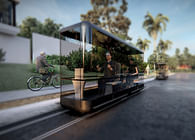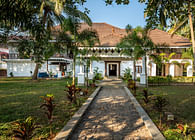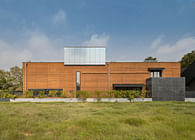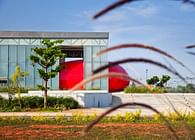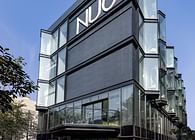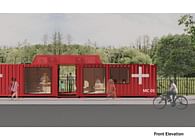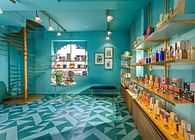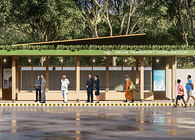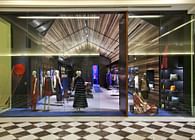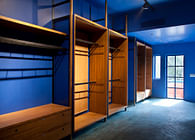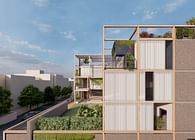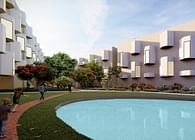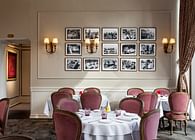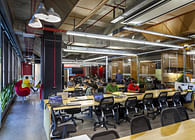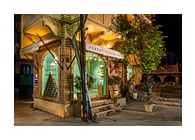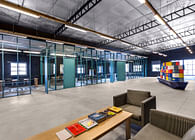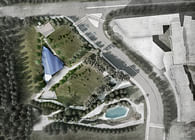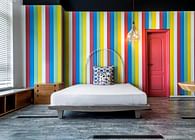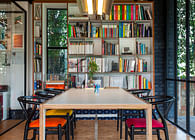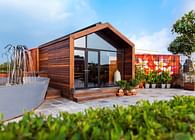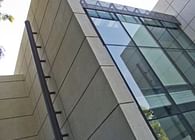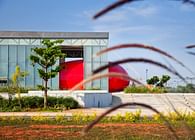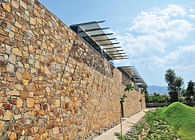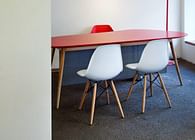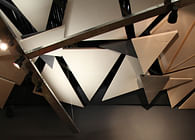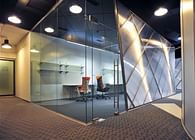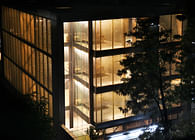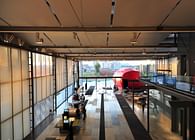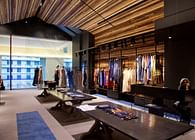
New Delhi, IN
The restaurant, named Three Sixty-Three Degrees, is a reinterpretation and an avant-garde take on the art and architecture of Kolkata. Insufficient historic documentation of the structure and its services proved to be a hindrance in the planning and spatial design. The structural interventions made during the initial construction stages followed a reinforced brick-concrete construction with a terracotta slab and steel reinforcement members. With the last intervention being implemented nearly fifty years ago, the steel had since corroded; similarly, building services had deteriorated, which needed alteration and repair to realize the present project brief. The objective was to retain the existing traditional components as much as possible and not replace them entirely, a challenge that was compounded by the location of the restaurant - sitting below six stories of guest rooms, a water tank and a terrace garden.
Considering all constraints, modern tooling techniques have been used to redo the restaurant, with an approach that would conserve the traditional construction technologies and expressions. This resulted in two exercises that took place simultaneously – first, was the restoration and strengthening of the structural system and services, and the second was the establishment of an architectural connectivity between the two spaces, the dining area and the bar. This connectivity has been established via two large openings disguised as pocketed doors, which open towards the bar and are painted black. These have been created by penetrating into three walls - each being 350 mm deep, with organic matter growing between them.
Upon entering, one is besotted by the space being bathed in natural light; an eleven-metre long, three-metre-deep skylight is sculpted through the middle of the restaurant, presenting a clear view of the sky, through the terrace garden above to overcome the lack of daylight ingress. An inherent planning drawback has been the lack of connectivity of the restaurant with the rest of the spaces. To establish connectivity between the restaurant and the bar, the existing walls have been punctured and the erstwhile bird-cage has been removed (which doubled as the engineering room).
For the interiors of the space, all modular details have been manufactured locally and shipped to Kolkata to be assembled and installed. To recreate the traditional filigree, inspiration was taken from the prevailing drawings, images and sketches of the hotel. Exaggerated details have been employed to reinforce the scale of the space. Derived from the proportioning systems used previously in the hotel, the wainscot details have been exaggerated and constructed using wood composite panels on a CNC machine. This is the first of a series of synthesized proportioning systems and the third layer of a polyrhythmic composition - The vaults are precast in white plaster and form the largest layer of the compositional rhythm, mimicking a traditional construction system through a contemporary expression. The spaces in between are recessed and used to conceal light fixtures and other services. The second layer of the polyrhythm consists of precast and machine-made fluted bulkheads that characterize the junction between the termination of the vaults against the vertical surfaces; designed in a manner that mimics the wainscot. At one end of the bar, a framed mirror masks a television to display infographics about the art and curios within the restaurant, sometimes switching to special broadcasts, live sports and television. The last layer is composed of eight red semi-circular banquettes, that rise just below the eye level to break the space, according privacy to the occupants within an open setting. Made of red leather, these banquettes seat four to six occupants around a table made of turned timber.
The most striking feature for the casual observer is the artwork on the walls, weaving together various stories of Kolkata’s abundant history. Reprints of assorted works from early Bengal and Company Schools have been selected from the Swaraj Art Archive, and framed along the walls, adding another visual dimension to the restaurant. The bar is a seven-meter-long block of aged brass, with laser-cut vertical lines, and a traditional screen at one end; highlighted with a bright blue counter-top, it announces its presence not only in volume, but also in detail. Seating has been designed on either side of the bar along with a private dining space that has been enclosed within a blue cylinder, which can be opened and closed as per usage and requirement.
The chevron-patterned floor is made of solid oak wood with brass accents, laid in accordance with the structural grid of the building. The large banquettes with turned tables hold prime space under the skylight, with other pieces being derived from the same family. Composed in slightly different colors and proportions to create a sense of comfort and familiarity, they all are inspired from Indo-Saracenic elements and retain an element of surprise. A large geometric Mobil, finished in gold, floats between the restaurant and the bar, emphasizing the connection between the spaces and adding a curious energy into the mix.
In an age, where most interior design improvises with found objects or attempts cold minimalism, Three Sixty-Three Degrees tips a hat to the roots of its space and remains progressive, pristine and timeless. The design transforms a dull indoor space into a bright, happy, and an almost alfresco one.
Status: Built
Location: Kolkata, IN
Firm Role: Architect
Additional Credits: Principal Architect | Akshat Bhatt
Design Team | Heena Bhargava, Debbyoti Dey, Chitrang Jha, Yashvardhan Khemka
